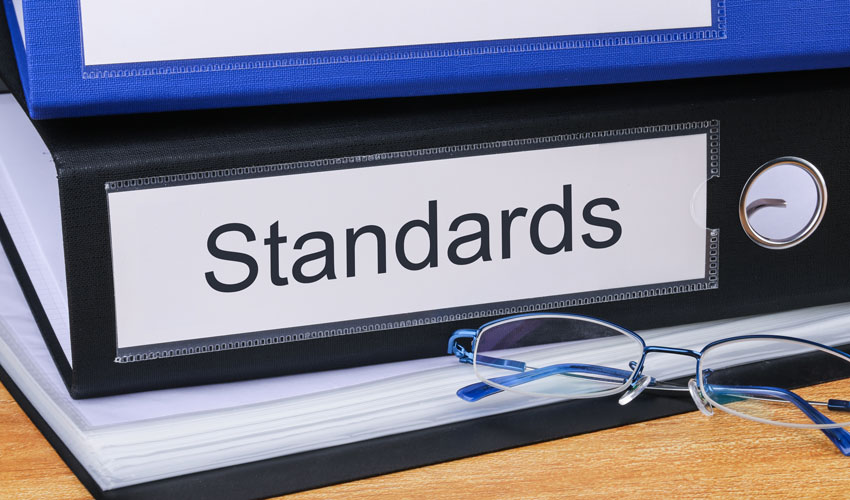How CGA Publications Get Developed: the Step-by-Step Process
October 20, 2019
The Compressed Gas Association (CGA) maintains a library of more than 300 publications, safety alerts, safety bulletins, technical bulletins, technical reports, and training materials. These publications are developed and maintained by CGA committees.
Ever wonder exactly how all those publications get developed?
First, to give you a quick overview, here’s a step-by-step, visual depiction of the publication process:
And here’s a more detailed description of each step in the process…
Proposing a New Publication
Requests for new publications are submitted to the committee responsible for the topic area using a New Work Item Proposal (NWIP). Any CGA member can prepare and submit an NWIP for consideration.
When reviewing the proposal, the committee must determine whether the work is a priority for the industry, they have adequate expertise to prepare and maintain the publication, and a reasonable number of members able to actively participate in the work.
If the NWIP is approved by the committee, it must go forward for Standards Council review and approval before work can begin.
New Publication Draft Development
Upon approval of a new publication work item, the task force has up to 18 months to complete a draft. The task force chair may request a draft deadline extension from Standards Council if the task force believes the draft will not be completed before the deadline.
Once the task force finalizes the draft, CGA staff format the draft and complete editorial and technical reviews. Any editorial changes identified by staff are incorporated, and any technical changes identified by staff are discussed with the task force chair to determine whether the draft needs to be reviewed again by the task force.
Once all comments are resolved, the draft is issued for membership review.
Membership Review
All CGA publications developed through our normal work process go through a membership review phase, during which all members are allowed to request changes to the publication. Publications and positions developed under expedited work processes may bypass membership review and be sent directly for Standards Council approval.
Any requests for modification must be submitted through the CGA member portal (member login required) as Proposed Changes (PCs). PCs are collected until a specified date, referred to as the PC cutoff date.
All Proposed Changes include a description of the change requested and a technical justification for the change; PCs may also include additional references or attachments. PCs may be developed and submitted by individuals or by task forces formed by committees to review the publication.
Members of the public who are not members of CGA may also submit PCs, by downloading, completing, and submitting this form.
Revised publications
Once the first edition of a CGA publication is published, a work item is opened to collect Proposed Changes for the next edition. This cycle continues for subsequent editions, with a new work item being opened to collect changes for the next edition each time a PC cutoff date passes.
The committee responsible for the publication can adjust the PC cutoff date as needed to address high-priority changes and maintain a level workload for the committee.
New publications
Completed new publication drafts are posted for review on CGA’s member portal and the review period is announced to all CGA committee members.
A typical membership review period for a new publication is 2 – 6 months, but shortened PC cutoff dates may be approved for urgent projects.
Committee Decision (PC Resolution)
Following the PC cutoff date, the quantity and complexity of the submitted Proposed Changes are reviewed to determine whether they can be resolved by the committee responsible for the publication, or if a separate Ad Hoc Committee (AHC) should be formed to complete the resolution.
The committee or AHC decides whether to accept, reject, modify, or supersede each Proposed Change. When a PC is modified or rejected, the result must be accompanied by a technical rationale from the committee or AHC to justify the decision. PCs that are accepted or modified and accepted are then incorporated into the publication.
When decisions have been made on all PCs submitted to a publication, the results and an updated publication draft are prepared for Standards Council for approval.
Members who disagree with the decisions on an individual PC may write a statement of nonconcurrence, which is included with the Standards Council’s ballot.
If no Proposed Changes are received before the PC cutoff date for a revision work item, the committee votes to reaffirm the publication and it is reissued. If no PCs are received before the PC cutoff date for a new publication work item, the committee votes to approve the publication as written and it then is forwarded to Standards Council for approval.
Staff Review
Once the committee completes PC resolution, CGA staff perform editorial and technical reviews. Any editorial changes identified by staff are incorporated, and any technical changes identified by staff are reviewed by the committee or AHC.
Once staff reviews are complete, the publication is forwarded to Standards Council for approval.
Standards Council Approval
Standards Council votes on the result of each Proposed Change submitted to a publication. Standards Council voters review all of the PC results related to a publication and vote to approve, approve with comment, disapprove, or abstain.
Votes to approve with comment are considered by the CGA staff and committee or AHC chair to determine whether they should be incorporated before publication. Any votes to disapprove require resolution, as publications must receive unanimous approval from all Standards Council members who vote on a ballot in order to be published.
If technical changes are made to resolve a comment or disapproval, they must be reviewed and approved by the committee or AHC and re-balloted to Standards Council.
Print Production
After Standards Council’s approval, the revised publication, incorporating the PC decisions, undergoes a final staff editorial and technical review. CGA staff announce when the publication is available.



